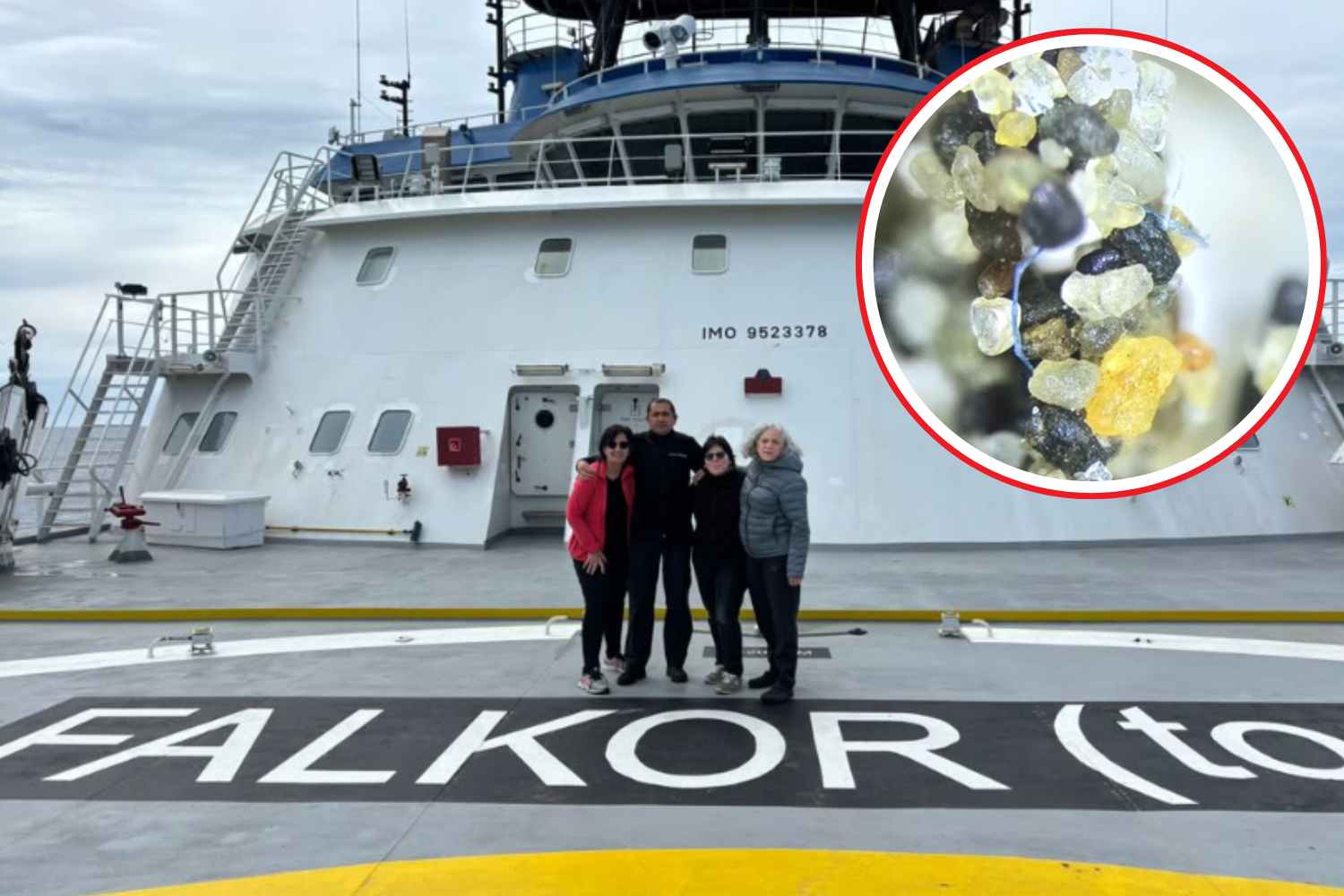The Argentine mission "Ecos de 2 Cañones," conducted by the Naval Hydrography Service and the Schmidt Ocean Institute, has discovered microplastics in sediments of Patagonian submarine canyons

A tiny fragment of plastic, invisible to the naked eye, tells a powerful truth: humanity’s footprint reaches everywhere, even in the most remote corners of the planet. This is what Argentine scientists discovered aboard the research vessel Falkor (Too) during the expedition “Ecos de 2 Cañones,” exploring the Bahía Blanca and Almirante Brown submarine canyons off the coast of Patagonia.
At approximately 984 feet (300 meters) depth, researchers found traces of microplastics in marine sediments, an unmistakable signal of environmental contamination even in ecosystems previously considered pristine. The sample was collected and sent to the Argentine Naval Hydrography Service (SHN), where it will be analyzed to determine the quantity, type, and distribution of particles.
The goal is to understand how the morphology of the seafloor influences microplastic accumulation: in which areas of the canyon they concentrate, and where they are less present. The research, coordinated by Silvia Romero from the University of Buenos Aires, involves Argentine oceanographers, biologists, and geologists, in collaboration with the Schmidt Ocean Institute and the Fundación Williams.
For the first time, scientists have access to advanced tools like the ROV SuBastian, an autonomous underwater vehicle capable of exploring and mapping ocean depths with high-resolution cameras, CTD sensors, and sediment collection probes. Thanks to this technology, it’s possible to observe in real time the dynamics of the canyons and the behavior of currents that shape the seafloor.
The expedition also holds significant ecological value: the cold, nutrient-rich currents of the Malvinas Current fuel the biological productivity of the southwestern Atlantic. However, the presence of microplastics could compromise the health of fundamental organisms like phytoplankton and zooplankton, which form the base of the marine food chain.
During operations, the biology team used a “mini bongo” net for plankton sampling at various depths, down to 164 feet (50 meters), along four longitudinal transects. The collected organisms were then preserved for quantitative analysis of diversity and abundance. These data, together with those from contaminated sediments, will help assess the real impact of microplastics on marine biodiversity.
The activities are documented daily on the official Instagram channel @ecosde2caniones and streamed live thanks to technical support from the Schmidt Ocean Institute.
Source: ecosde2caniones
